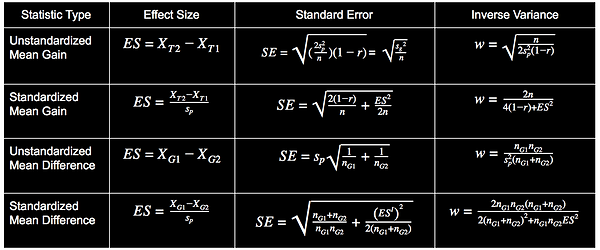Step 7: Drawing Conclusions
- Nathaniel Thom
- Jun 2, 2023
- 2 min read
Once you have completed the analysis of your data, you can begin drawing conclusions and summarizing your findings in a presentable (and publishable) manner. There are several key components to include once you start drafting a manuscript:
Table 1: This table contains all of your effects, listed in ascending order of effect size along with the number of participants, the 95% confidence interval, and a few other key components that characterize the study
Figure 1: This is a flowchart of the studies you included beginning with the total number of articles found and diagraming the exclusion process
Table 2: This table includes each of the moderators included in your model broken down into their respective groups. Each group is listed along with the number of effects, its mean effect size, 95% confidence interval, and contrast weight as well as the between-groups p value attained from the univariate macro.
Forrest Plot: This will most likely be the only graph included in your manuscript (all others will be placed in supplemental materials). You can create forrest plots in SigmaPlot. Visit the "How to use SigmaPlot" page for further direction.
Discussion: The discussion section of your manuscript should include a paragraph for each of the significant moderators, as well as one for each of those that were not significant but should have been. These paragraphs should cite articles included in your meta-analysis that support your findings, as well as any outside research that may help explain the underlying mechanisms driving your findings. You can also create a poster to summarize the main findings from the meta analysis (mostly used at conferences.) The poster should include an abstract, the aims of the investigation, the methods, a results section and moderator effect sizes section with graphs, conclusions, and any references. An example of a poster is below.

REMEMBER: Meta-analysis is an iterative process. Thus, you may have completed your final analysis, but new questions may arise, or new articles may be published, at which point you will need to revisit the analysis and coding steps respectively.






